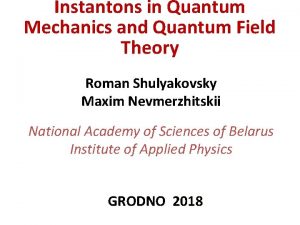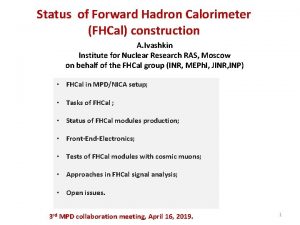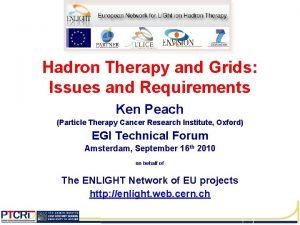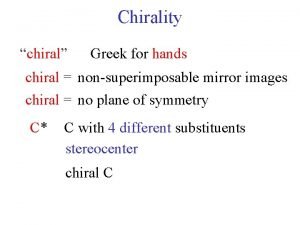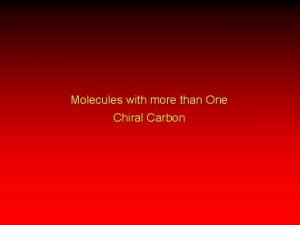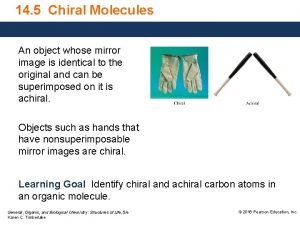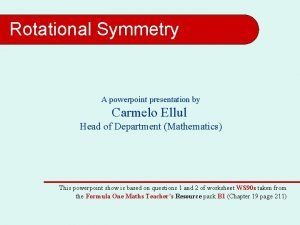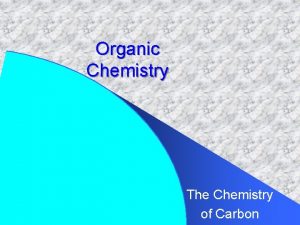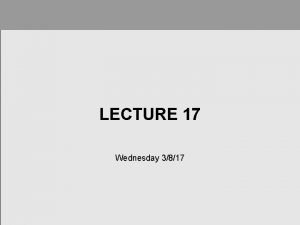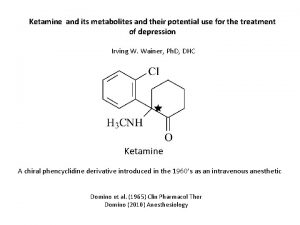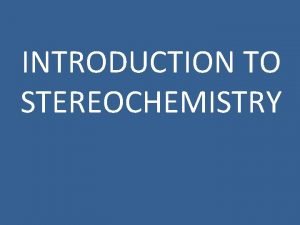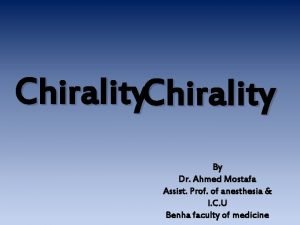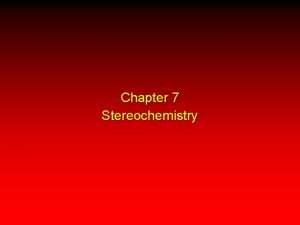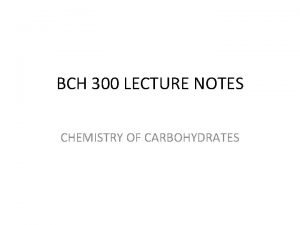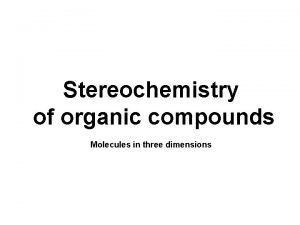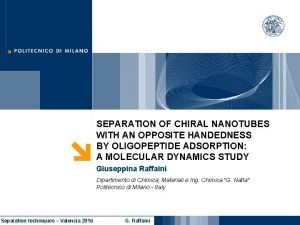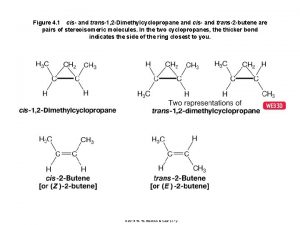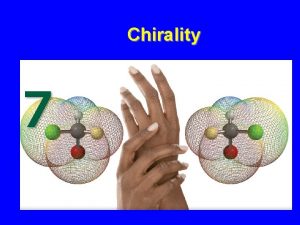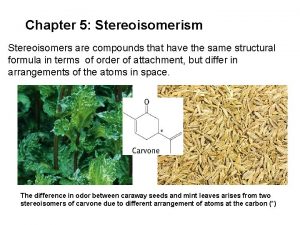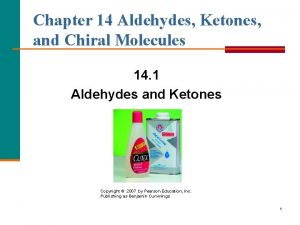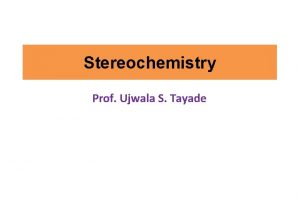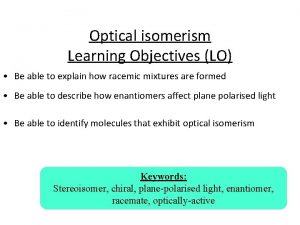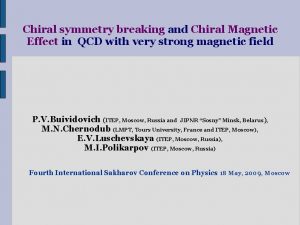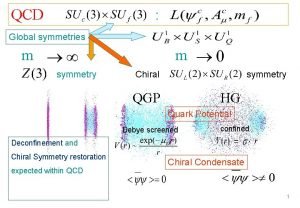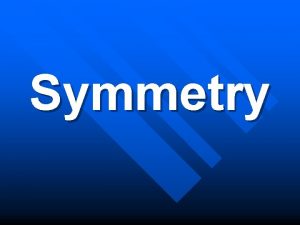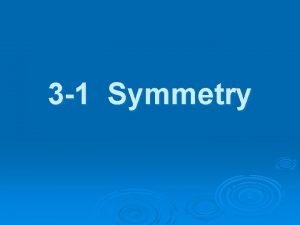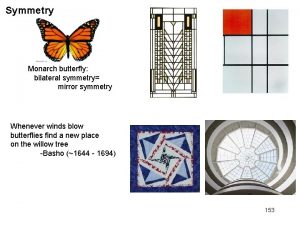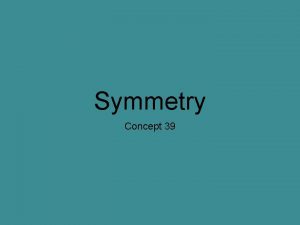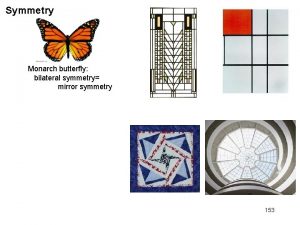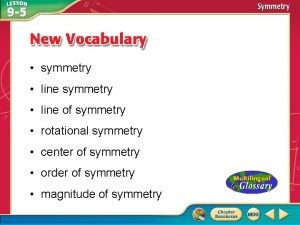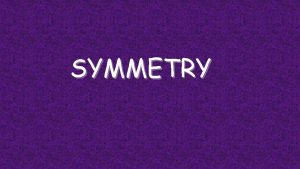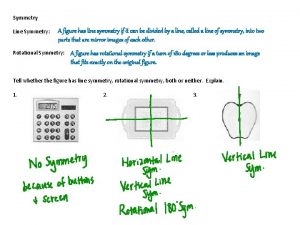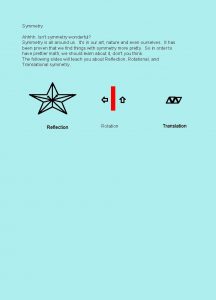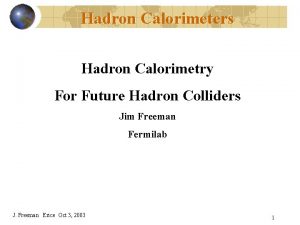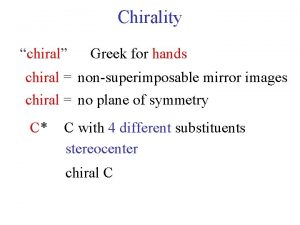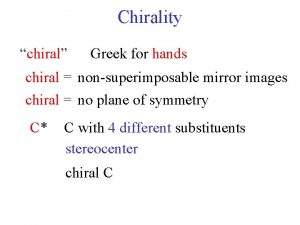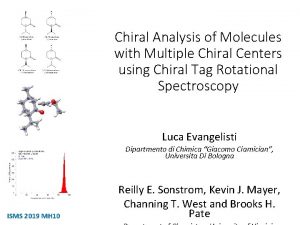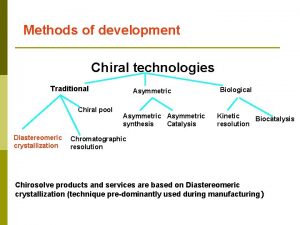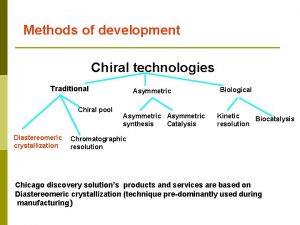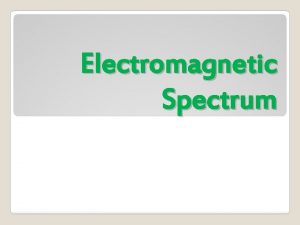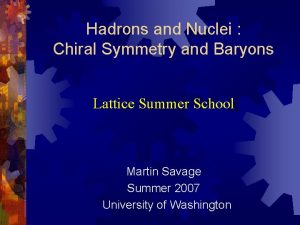Chiral Symmetry Hadron Spectrum and Instantons P Faccioli




























- Slides: 28

Chiral Symmetry, Hadron Spectrum and Instantons P. Faccioli, M. Cristoforetti, M. C. Traini Trento University & I. N. F. N. J. W. Negele M. I. T. Hadron 2007 Frascati, October 12 th , 2007

What are the dominant correlations in Hadrons ? The SU(6) Quark Model answer: • Binding of hadrons is entirely due to confinement. Without confinement, hadrons would not exist • Residual fine structure from e. g. perturbative gluon exch. Chiral symmetry plays a sub-leading role However, we know at leas one exception: the PION would exist even in the absence of confinement (see e. g. NJL model) QUESTION: Are there other hadrons for which chiral symmetry plays the dominant role?

In the last decade, LQCD has provided important new information about non-perturbative quark-gluon dynamics. It is important to revisit and address this question in view of what we know in 2007 from LQCD.

The role of chiral dynamics in hadron spectrum Light 0 - meson 2 -point fnct. Small eigen-values of the Dirac Operator Chiral Dynamics Conclusion: Physics of light hadrons is strongly affected by chiral dynamics Physics of heavy hadrons is not. T. De Grand, 2001

Gauge Configurations responsible for chiral symmetry breaking in QCD Dirac eigenvalues filtering C. Gattringer PRL (2002) Cooling Chu, Negele et al. PRD (1993) Instantons are gauge configurations associated to chiral dynamics (but Horvath’s group…)

Interacting Instanton Liquid Model (IILM) QCD vacuum as an instanton ensemble Theoretical ingredients of the model are derived from semi-classical arguments (Stream-line construction) Need a counter-term to parametrize the excluded ultraviolet physics One parameter model: the strenght of the I-A interaction counter–term. Everything else is calculated (instanton size, density, hadron masses, quark condensate, etc…)

Tests of the instanton picture against LQCD Probability of chirality flip for quarks propagating in the vacuum Prediction of the instanton picture: R(t) 1 2 nd inst. 1 st inst. L R t L PF, T. De. Grand, Phys. Rev. Lett. 91: 182001, 2003

4 important features of instanton-induced dynamics • Spontaneous Chiral symmetry breaking and anomalous U(1) breaking. The IILM contains Chpt as low-energy EFT M. Cristoforetti, PF, M. Traini, J. Negele (2007) • Link between current and constituent quarks Lattice: P. Bowmann et al. PRD (2004) Instantons: Diakonov & Petrov NPB, PL, B (1984)

• Diquark correlations Mass ≈ 500 Me. V (“good diquark” channel) Size ~ 0. 6 -0. 7 fm M. Cristoforetti, PF, G. Ripka. M. Traini 2004 • Lack of Confinement Bad description of long-range non-perturbative correlations It is legitimate to use it as a tool to investigate the role of chiral forces in light hadrons

Instanton forces in light hadrons: Stable states Pion and Nucleon

Light hadron spectroscopy: Pion and Nucleon masses Two-point Correlation function Effective mass plot Pion mass Nucleon mass

Light hadron spectroscopy: Pion and Nucleon masses

Light hadron spectroscopy: Pion and Nucleon masses O(p 4)

Light hadron Phenomenology: Form Factors, Non Leptonic Hyperons decays, Diquark correlations Elastic Form Factors of nucleons and pions Non-leptonic decays of hyperons (ΔI=½ rule) Diquarks Mass, correlations, sizes

Light Hadrons: Instanton forces in Resonances light hadrons: Lowest Resonances ρ and a 1

Light hadron spectroscopy: Resonances Why ρ and a 1 ? • First excited state: sensitive to both chiral symmetry breaking and color confinement • The splitting between the mass of the two meson due only to chiral symmetry breaking

Light hadron spectroscopy: Resonances Pion and Nucleon masses Two-point Correlation function Spectral Effectiverepresentation mass plot Pion mass Nucleon mass ?

Light hadron spectroscopy: ALEPH data effective mass plot ρ meson

Light hadron spectroscopy: Interacting Instanton Liquid Model ρ meson

Light hadron spectroscopy: ALEPH data effective mass plot a 1 meson

Light hadron spectroscopy: Interacting Instanton Liquid Model a 1 meson

Light hadron spectroscopy: Conclusion about lowest-lying resonances • Vector and Axial vector resonances exist in the model (surprise: no confinement) • Mass are found to be some 30% larger. • Perfect chiral-splitting parameter

Conclusions: Where chiral forces do the job • The Instanton liquid model is consistent with Ch. PT • The Instanton-induced chiral forces reproduce well pion and nucleon masses • ρ and a 1 resonances exist in the Instanton vacuum • Splitting is ok.

Cartoon Summary of IILM results Identity card: Name: Pion Mass: 138 Me. V Status: Stable State Size: 0. 6 fm Features: Goldst. boson Decay: N/A Name: Mass: Status: Size: Decay: These results provide a picture which is very different from the SU(6) Quark Model view Rho ~1000 Me. V Resonance N/A constituents -Dominance of chiral dynamics in light hadrons -Diquarks Identity card: Name: Nucleon Mass: 940 Me. V Status: Stable State Size: 0. 8 fm Features: diquark content Decay: N/A Name: Mass: Status: Size: Decay: a 1 ~1500 Me. V Resonance N/A constituents

Related work not discussed here: • Exploration of the microscopic origin of chiral logs: at which quark mass scale does one enter the chiral regime? (M. Cristoforetti, P. F. M. Traini and J. W. Negele, PRD 2007) • Instanton correlations in glueballs (M. Tichy, M. Cristoforetti, P. F. , in preparation)

Chiral Dynamics in Interacting Instanton Liquid Model: Quantities to compare directly Ch. PT and IILM are needed Spectrum of the Dirac Operator IILM Ch. PT prediction: For Nf=2, mq=0 the density of eigenvalues of the Dirac Spectrum should become flat near the origin

Interacting Instanton Liquid Model: In the chiral regime Spectrum of the Dirac Operator: finite-mass corrections IILM Consistent with Ch. PT constant prediction for mq<80 Me. V

Light hadron spectroscopy: Pion and Nucleon masses I box: 3. 53 x 5. 9 fm 4 II box: 3. 03 x 5. 9 fm 4 mq=21 Me. V mq=30 Me. V mq=50 Me. V mq=70 Me. V mq=90 Me. V
 Instantons
Instantons Hadron calorimeter
Hadron calorimeter Hadron collider
Hadron collider Hadron collider
Hadron collider Hadrons
Hadrons Hadron
Hadron Orbital description
Orbital description Absorption spectrum
Absorption spectrum 2 3 dihydroxypropanal chiral
2 3 dihydroxypropanal chiral Chiral achiral
Chiral achiral Hexaldose
Hexaldose Chiral and achiral carbon
Chiral and achiral carbon Ppt on symmetry
Ppt on symmetry Chiral vs achiral
Chiral vs achiral Chiral carbon in monosaccharides
Chiral carbon in monosaccharides Ketamine chiral centers
Ketamine chiral centers Chiral vs achiral
Chiral vs achiral Ketamine chiral centers
Ketamine chiral centers What is a stereocenter vs chiral center
What is a stereocenter vs chiral center Carbohydrates lecture notes
Carbohydrates lecture notes Chiral carbon
Chiral carbon Chiral
Chiral Chiral
Chiral Chiral material
Chiral material Cahn ingold prelog rules
Cahn ingold prelog rules Chiral
Chiral Chapter 14
Chapter 14 Determine chiral centers
Determine chiral centers Optical isomerism
Optical isomerism
